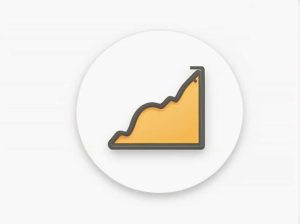A quota in economics refers to a government-imposed limit on the quantity of a good that can be imported exported or produced within a specific time frame. Quotas are commonly used to regulate trade protect domestic industries and control market supply.
Understanding quotas is essential for businesses policymakers and consumers as these restrictions influence prices competition and economic growth. This topic explores the definition of quotas different types their advantages and disadvantages and real-world examples.
What Is a Quota in Economics?
Definition of a Quota
A quota is a restriction set by a government that limits the amount of a product that can enter or leave a country. Unlike tariffs which impose a tax on imported goods quotas directly control the volume of trade.
Quotas are typically used for:
- Protecting domestic industries from foreign competition.
- Controlling supply to stabilize market prices.
- Ensuring national security by restricting sensitive goods.
- Managing scarce resources such as fisheries or energy supplies.
How Quotas Work
Governments or trade organizations set quotas by specifying:
- The maximum quantity of a product that can be imported/exported.
- The timeframe for the quota (monthly annually etc.).
- Which countries the quota applies to.
Once the quota limit is reached no further imports or exports of the restricted good are allowed unless special permissions are granted.
Types of Quotas
1. Import Quotas
Import quotas limit the number of foreign goods that can enter a country. This helps local producers compete with cheaper international alternatives.
Example: The U.S. limits the number of imported sugar and dairy products to protect domestic farmers.
2. Export Quotas
Export quotas restrict the amount of goods a country can sell abroad. These are often used to:
- Prevent domestic shortages.
- Maintain stable global prices.
- Protect natural resources.
Example: In 2010 China imposed export quotas on rare earth minerals which are essential for electronics manufacturing.
3. Production Quotas
Production quotas limit how much of a product can be produced within a country. These are common in industries where oversupply could lead to price drops or environmental concerns.
Example: OPEC (Organization of the Petroleum Exporting Countries) sets production quotas to control oil supply and stabilize prices.
4. Tariff-Rate Quotas (TRQs)
A tariff-rate quota allows a certain amount of a good to be imported at a low tariff but once the quota is exceeded higher tariffs are applied.
Example: The European Union applies TRQs on beef imports allowing a limited amount at a reduced tax rate while imposing high duties on additional imports.
5. Voluntary Export Restraints (VERs)
A voluntary export restraint is an agreement where a country self-limits its exports to another country. These are usually negotiated to avoid stricter trade barriers.
Example: Japan agreed to limit car exports to the U.S. in the 1980s to ease trade tensions.
Why Governments Use Quotas
1. Protecting Domestic Industries
Quotas help local businesses by reducing competition from foreign goods. This supports industries like agriculture steel and manufacturing.
2. Preventing Market Saturation
By limiting imports or production quotas prevent excess supply which could lead to falling prices and economic instability.
3. Maintaining Trade Balance
Quotas can help countries reduce trade deficits by limiting imports and encouraging local production.
4. Preserving Natural Resources
Some quotas are placed on exports of scarce resources like oil timber or fish to ensure sustainability.
5. Ensuring National Security
Certain goods such as weapons or advanced technology may be restricted to prevent security threats.
Advantages and Disadvantages of Quotas
Advantages of Quotas
✔ Supports Domestic Businesses
- Limits foreign competition and allows local companies to grow.
✔ Encourages Economic Growth
- Boosts local production and creates jobs.
✔ Stabilizes Prices
- Prevents oversupply keeping market prices steady.
✔ Controls Resource Depletion
- Prevents overuse of scarce materials.
Disadvantages of Quotas
✘ Higher Prices for Consumers
- Limiting supply reduces competition leading to higher prices.
✘ Reduced Product Variety
- Fewer imported goods mean less choice for consumers.
✘ Encourages Inefficiency
- Protected industries may become less competitive without foreign rivals.
✘ Trade Conflicts
- Countries affected by quotas may retaliate with their own restrictions harming global trade.
Real-World Examples of Quotas
1. U.S. Sugar Import Quota
- The U.S. limits sugar imports to protect local farmers.
- As a result U.S. sugar prices are higher than global prices.
2. OPEC Oil Production Quotas
- OPEC sets quotas for oil production to manage global supply and prices.
- If supply is too high oil prices drop; if supply is limited prices rise.
3. EU Dairy Quotas (1984-2015)
- The European Union imposed milk production quotas to prevent overproduction.
- The system was abolished in 2015 to allow free market production.
How Quotas Differ from Tariffs
| Feature | Quotas | Tariffs |
|---|---|---|
| Definition | Limits quantity | Imposes tax |
| Impact on Price | Raises prices due to scarcity | Raises prices due to tax |
| Revenue for Government | No revenue generated | Generates tax income |
| Control Method | Direct restriction | Cost-based restriction |
Quotas are an essential tool in economic policy helping governments regulate trade protect industries and control supply. While they provide benefits such as stabilizing markets and encouraging local production they also lead to higher consumer prices and reduced competition.
Understanding how quotas work allows businesses and consumers to navigate international trade more effectively. As economies evolve many nations seek a balance between protectionism and free trade ensuring economic growth while maintaining fair competition.



